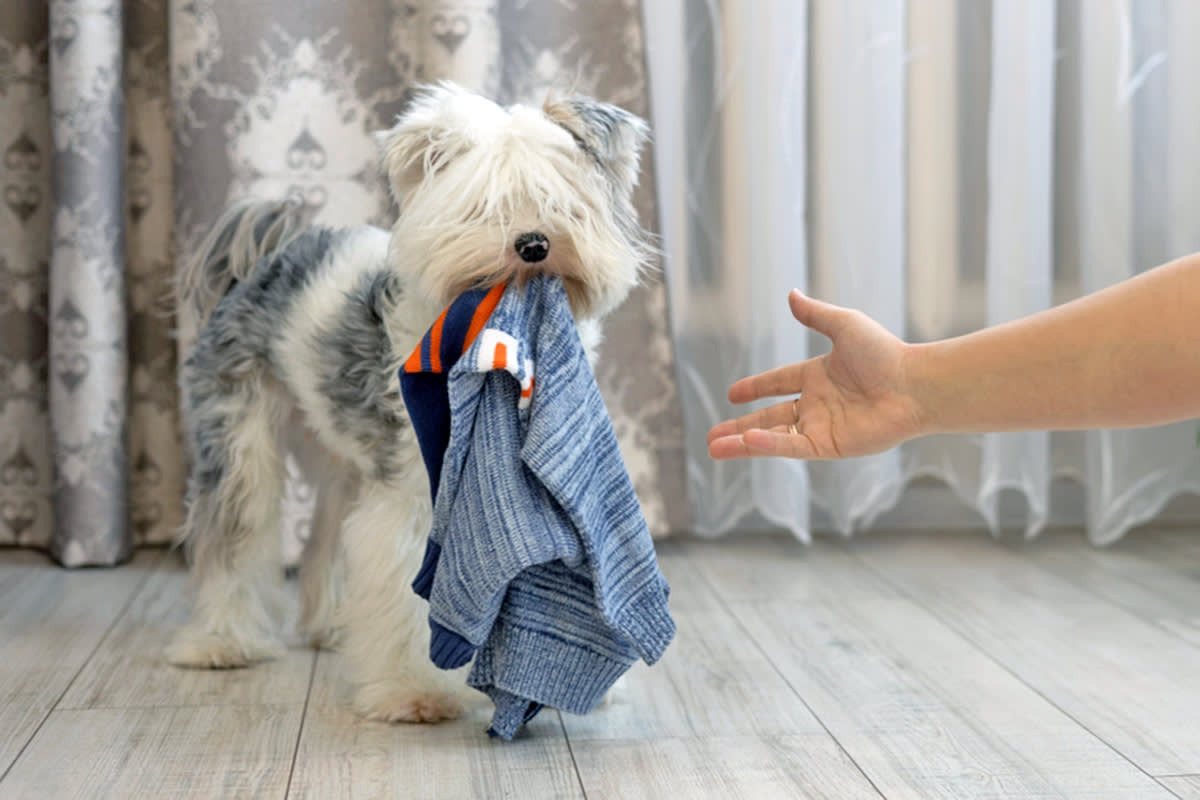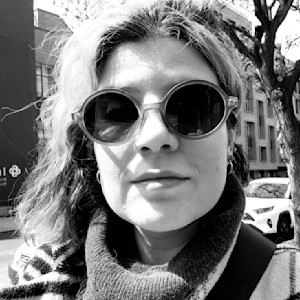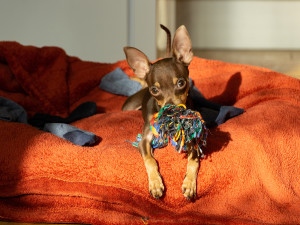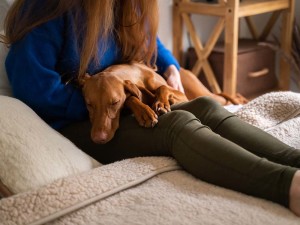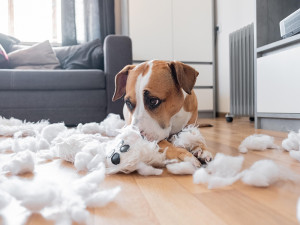Why Won’t Your Dog Stop Eating Your Socks and Underwear?
The reason could be sweeter than you think.
We all have our vices, and dogs are no different. Some treat the trash can like their own personal buffet. Others love living up to stereotypes by gobbling down textbooks and homework. And then, there are the true freaks of the canine kingdom — the naughty pups who munch on dirty clothes like socks and underwear.
Make no mistake: We’re not here to literally yuck anyone’s yum, especially when that someone is your beloved dog. In fact, experts say that chewing on clothing is a pretty common, if not entirely productive, fixation. Sometimes, it’s boredom. Sometimes, it’s because they want to interact with something that smells like their favorite person. Aw. And sometimes, it’s pure animal instinct.
Trick question: All dogs are perfect! But find out which type is the best fit for you.
We asked two experts — Amy Learn, board-certified veterinary behaviorist and certified animal behavior consultant and Jenny Dagnino, behavior and training manager for the Arizona Humane Societyopens in new tab — to give us the dirt on this grimy habit, and how best to handle it in your pet.
So, why do dogs chew on clothes?
How much do you spend on your pet per year?
Because they’re bored or anxious
You might not think much about your laundry, but for a dog, that pile of filthy clothes might be as intriguing as the season 3 finale of The White Lotus. “Clothes are interesting,” Dagnino says. “Especially clothes that have been worn. Clothes that smell like you. Stinky clothes. Dogs love stinky things — the stinkier, the more attractive.”
Sweaty socks, dirty underwear, bras hung on the doorknob, and leggings you just wore to the gym are all fair game, as far as an untrained dog is concerned. And if your pooch is dealing with anxiety, all that chomping could be a coping mechanism.
“Dogs chew on lots of things,” Learn says. “Chewing is a self-soothing behavior that allows them to decompress when they are overwhelmed. Some dogs choose hard items [like] sticks and bones, while others choose softer things to rip apart. Others chew or suck on soft items in a compulsive way due to life or environmental stress.”
Because they love us
In some cases, Learn says, dogs will specifically seek out clothing items that smell like their humans “because they are interesting.” Dagnino likens this impulse to a familiar line from the children’s book Where the Wild Things Are: “Oh please don’t go — we’ll eat you up — we love you so!”
The impulse can be incredibly strong, especially when your clothes’ stench rises to the same level as your dog’s passion. Dagnino recalls her sister’s husband, who was a line cook, and her Daschund, who always eagerly stole his socks when he came home from a long day of work.
“It must have been disgusting, but she wanted that sock as soon as he got home,” Dagnino says. “I think dogs will often chew things that smell like their favorite people.”
Because they’re dogs
As fun (and, sometimes, important) as it is to armchair psychologize our pets, there is one other reason your dog might be endlessly fixated on your laundry pile: Dogs are hardwired to chew, and unless we teach them what to chew, they might be drawn to just about anything. That’s why chewing laundry can be particularly common among younger dogs and dogs who have not been trained to nibble on sanctioned items only.
“It’s just a behavior that's kind of built in,” Dagnino says. “It’s their software.”
What should you do if your dog likes to chew on clothes?
You know that Benjamin Franklin quote about an ounce of prevention being worth a pound of cure? That’s definitely true here. If your dog can’t stop chewing holes in your favorite clothes, your first step toward happiness and harmony is to cut them off at the source. As Dagnino puts it, “You’ve got to get that stuff out of reach.”
You know the drill: Close the necessary doors. Keep your clothes off the floor. Use baby gates, lidded hampers, and all other tools at your disposal to keep your funky socks out of reach. Once you’ve ensured that your dog can’t get to the wrong “chew toys,” you can focus on helping them find the right ones. Learn suggests using chew toys, exercise, attention, and play to keep your dog satisfied.
“When a dog has something it should not, trade for a treat, and then offer an appropriate chew item instead,” Learn says. “If the dog guards or becomes aggressive, seek help from a veterinary professional or a positive reinforcement trainer.” Punishment, she says, is not an appropriate training tool.
But one more thing about those chew toys. Per Dagnino, it’s not enough to drop a heap of stuffed animals and squeakers on the floor and hope for the best. You need to pay attention to your dog and find out which toys they actually like — and, in some cases, to help them learn to like them.
Some dogs will gravitate toward certain toys right away — from the squeakers, to the ropes, to the cuddly stuffies. Others might be apathetic at first. In those cases, Dagnino suggests sitting down and trying to engage them in play.
If you have a rope toy on hand, try dipping it in low-sodium broth and freezing it for extra appeal. You might also try toys that you can stuff with goodies like peanut butter and treats. Whenever your dog chews on a sanctioned item, act excited and give them the praise they deserve. And to keep toys feeling fresh and novel, get a rotation going, keeping only a few out at a time.
When should you take them to a vet?
Chewing might be the gateway to eating, but according to both Dagnino and Learn, these behaviors often have different causes. If your dog is actually swallowing your dirty drawers, it’s probably time to call a vet. In some cases, Learn says, chewing and swallowing clothing can be more than a behavioral issue; your dog might eat clothing because of underlying gastrointestinal discomfort. In some cases, Learn says, they might need a special diet or treatment protocol to feel better.
If your dog has eaten something and you’re worried they might have an intestinal obstruction or other gastrointestinal issues, Learn suggests watching for telltale signs, which can include decreased appetite, not eating, vomiting or retching, diarrhea, and constipation.
And even if your dog seems fine, eating clothing is still cause for concern and should not be ignored. “Eating non-food items can become a compulsive behavior called pica if left untreated,” Learn says. “It should be addressed early on.”
It can be tempting to try and deal with these problems alone, but in this case, it’s best not to bite off more than you can, uh, chew. If your dog is actually eating clothes or other non-food items, schedule a full examination and work-up with your veterinarian and come up with a plan to shift their eating habits. Your dog’s digestive system will surely thank you.


